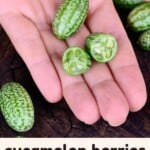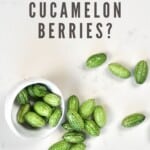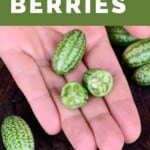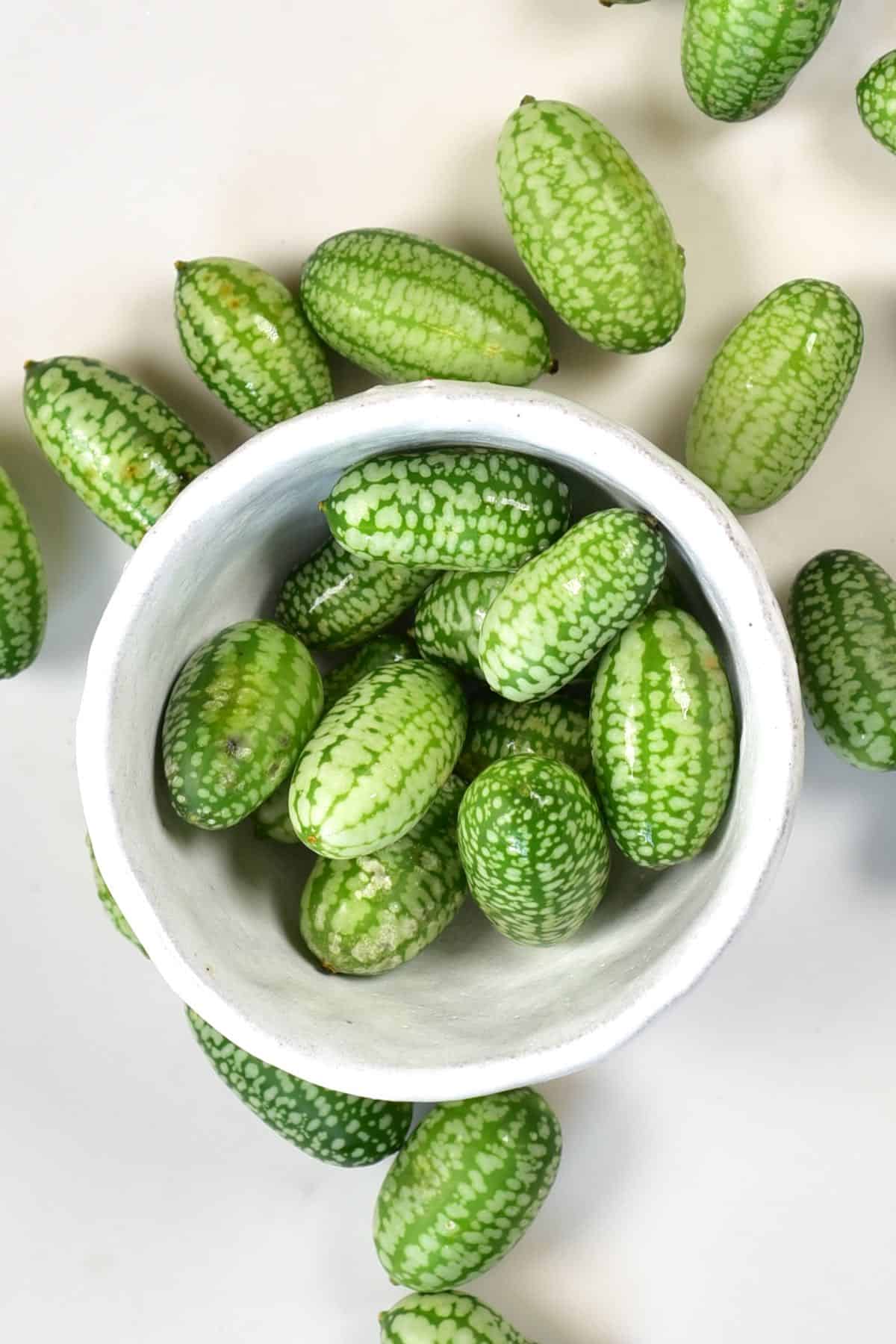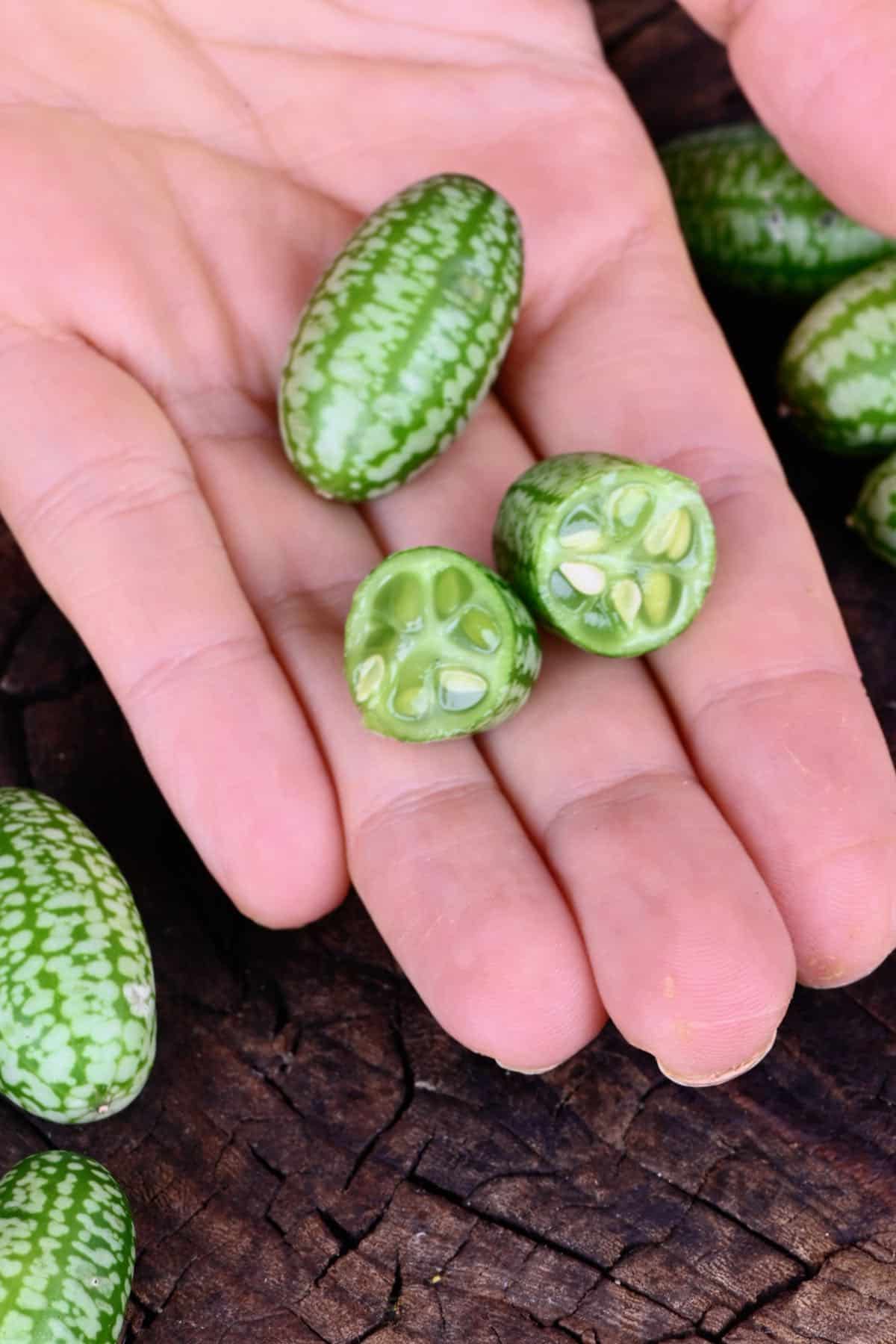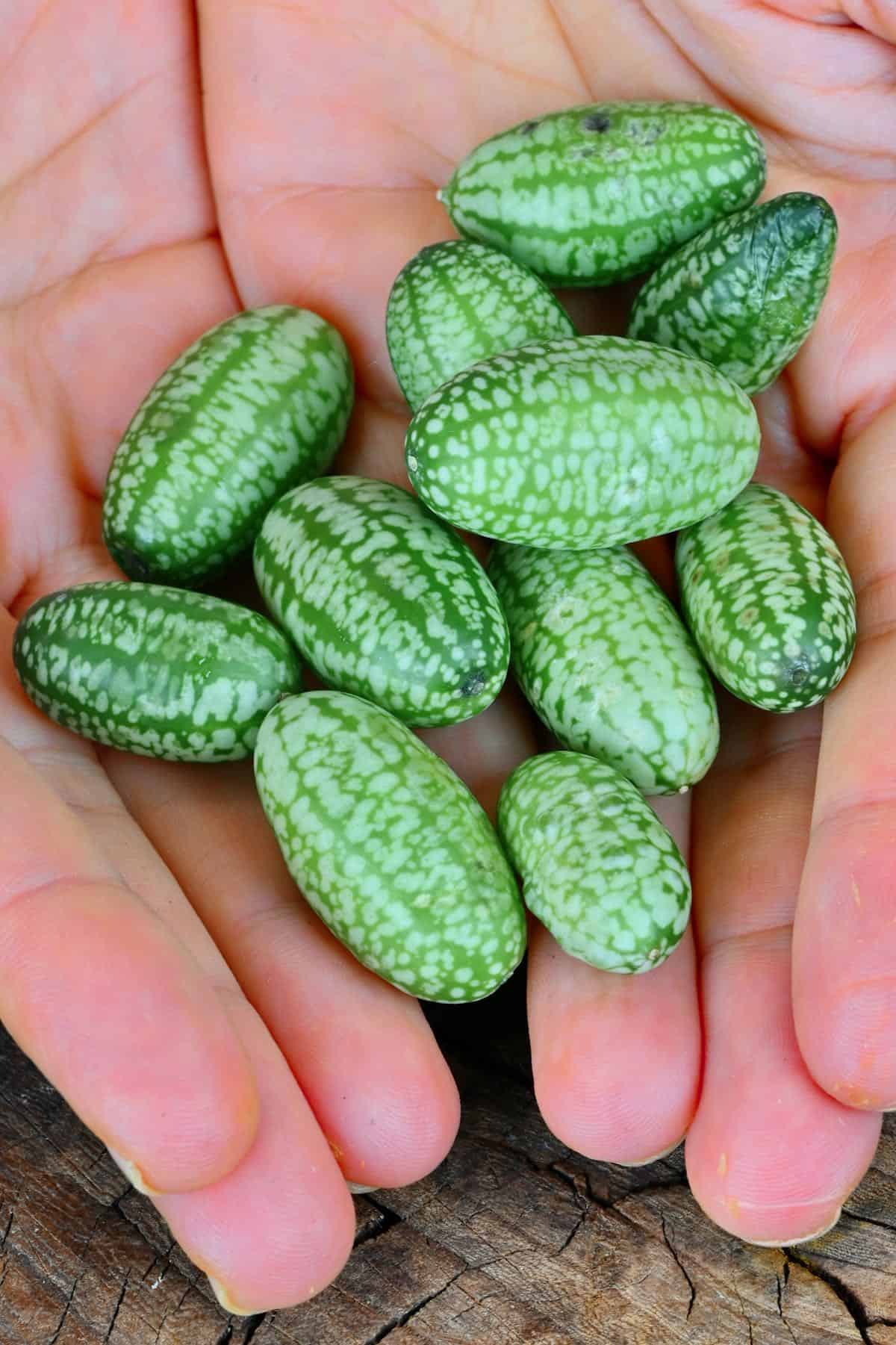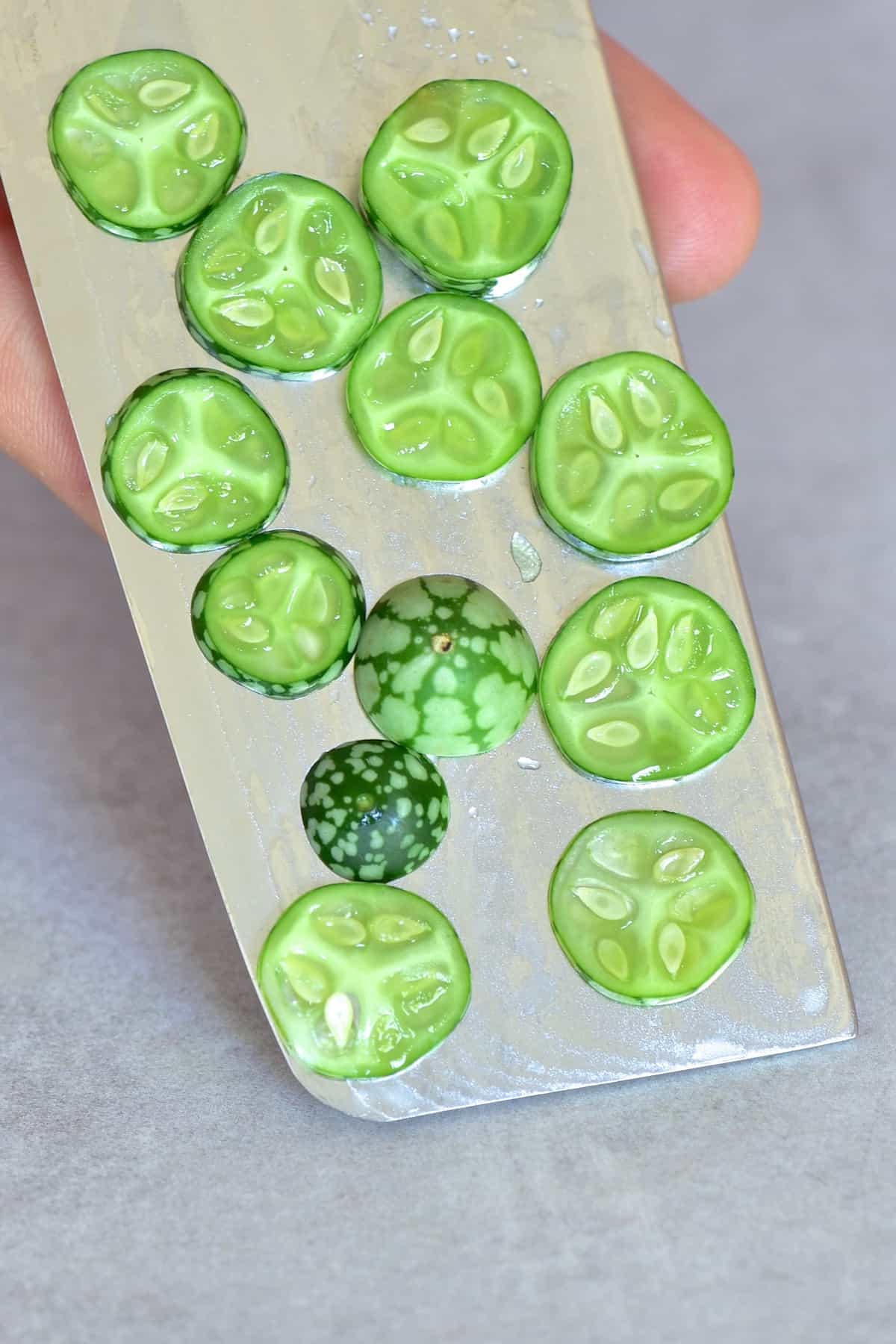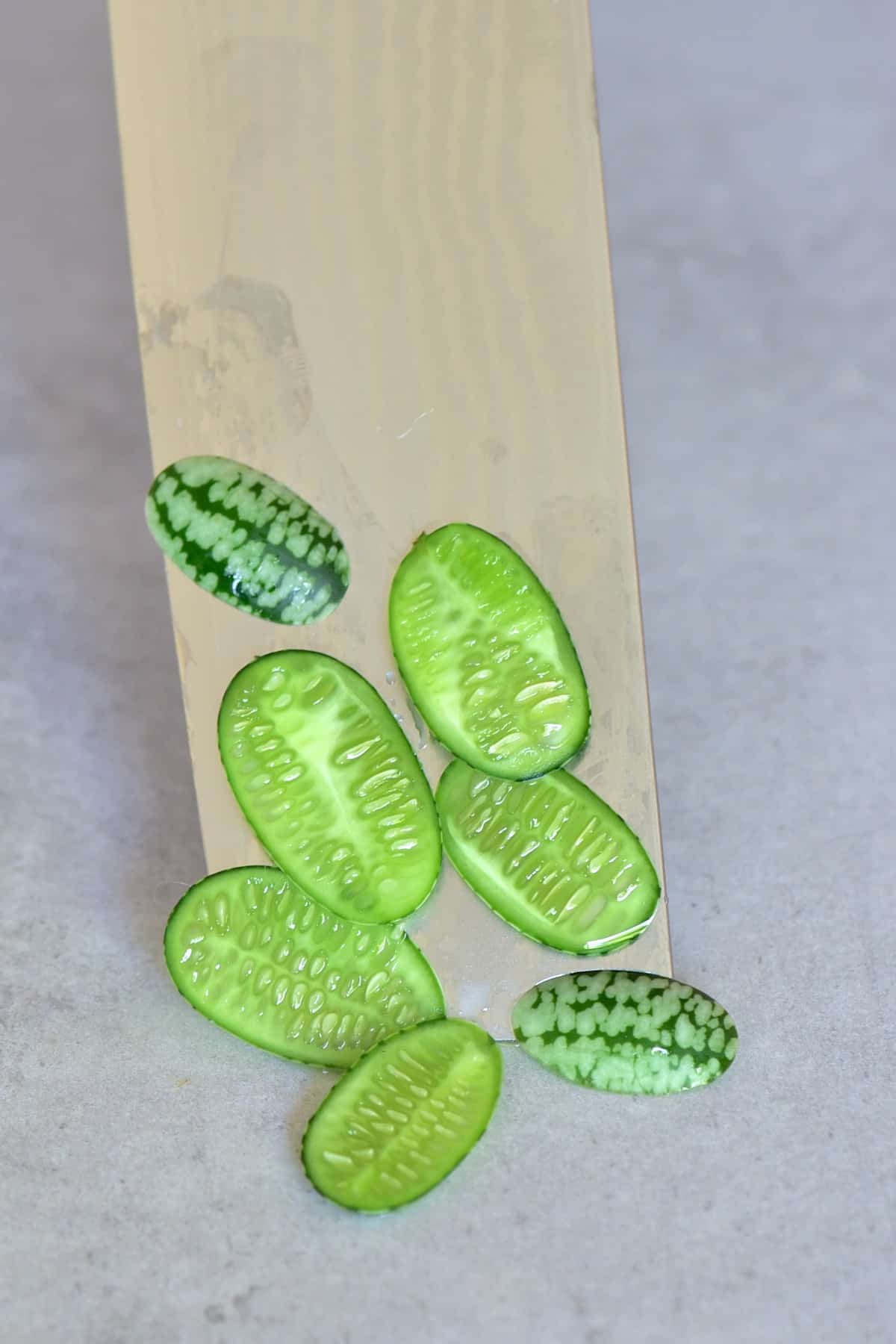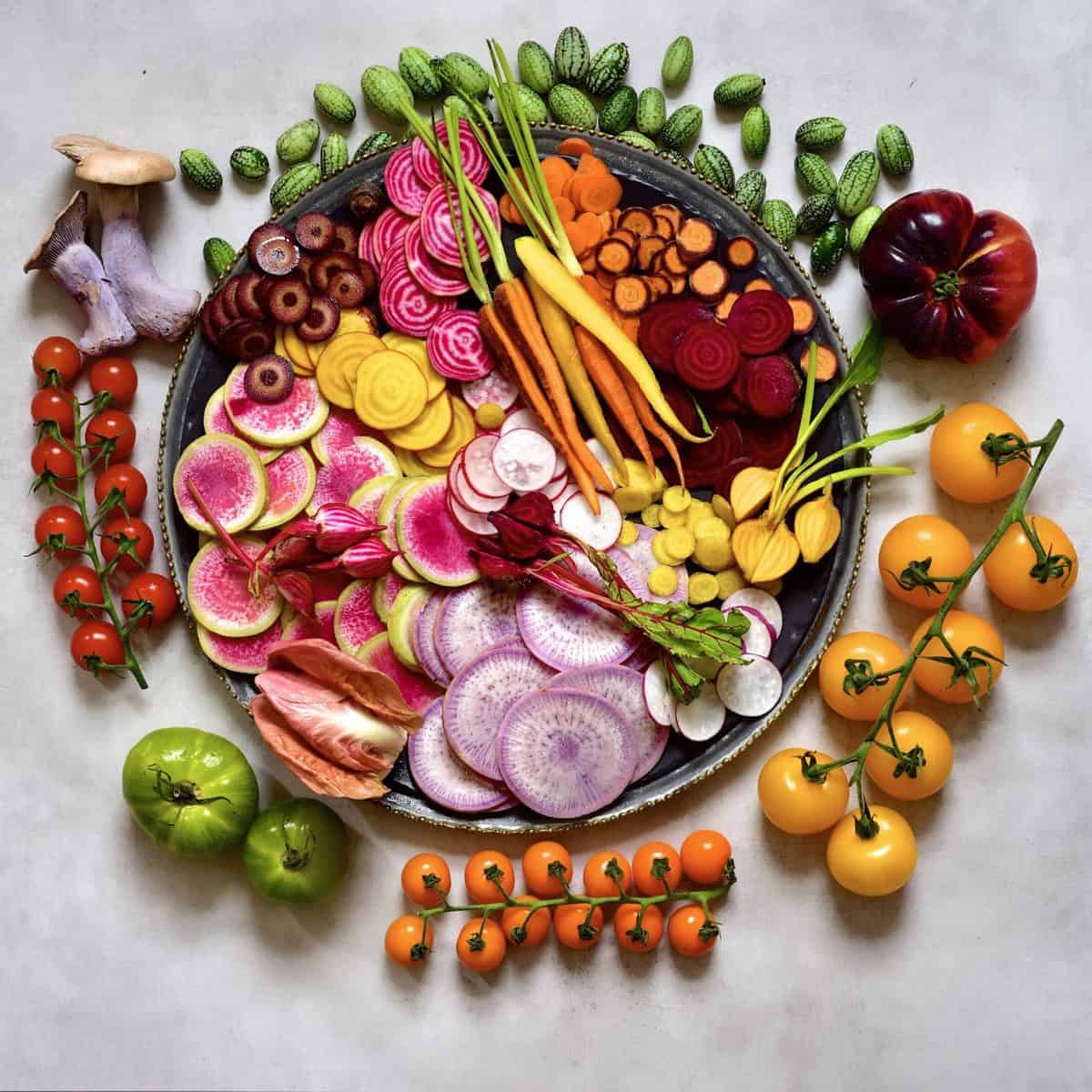What is a cucamelon?
Cucamelon (aka melothria scabra) is a small, natural (non-GMO) fruit, the size of a grape, native to Mexico, referred to by many names, including mouse melon (Sandia de ratón), little watermelon (sandita), Mexican sour gherkin, and Mexican sour cucumber are all names used to describe this fruit. Unsurprisingly, the ‘cucamelon’ looks exactly like a miniature version of watermelon on the outside, with cucumber-like insides. However, they are actually neither. Instead, they are part of the cucumber family, but a different species (Melothria scabra). Growing cucamelons is also fairly simple. Not only is the plant often ignored by pests, but it also grows well in areas of drought, hot weather, and cooler climates (as long as there’s still sunshine). In general, it is very easy to grow – taking just a few months and not much space.
Their health benefits
There doesn’t seem to be a lot of research surrounding the health benefits of this grape-sized fruit. However, I’ve come across various sources that claim cucamelon can help reduce the risk of stroke, contains heart-healthy properties, and even anti-cancerous properties. They are also said to have a high antioxidant content, Vitamin C, E, K, Potassium, and fiber. In fact, several sources consider them a type of superfood.
What does cucamelon taste like?
Cucamelons are refreshing and slightly tangy in flavor —likely owing to their “sour cucumber” moniker. Many describe them (and I agree) as the flavor of cucumber soaked in lime juice. I don’t find them overly sour or, at least, not enough to consider them “sour cucumbers.” However, I find the flavor crisp, fresh, and slightly sour.
Where to find them
This really depends on where you live. Though they aren’t available in many mainstream supermarkets, I have found them at farmers’ markets and the occasional independent store. You can also buy the seeds or grow-your-own kits and grow the cucamelon plants easily at home.
How to use
There are several main cucamelon recipes and ways to eat cucamelons. Here are some of my top picks and suggestions. You’ll notice when they’re past their best as they begin to shrivel and lose their crunch. At this point, they can still be used for flavored water and alcoholic drinks.
Pickled whole – following the same method used in this pickle recipe. Within salads – wonderful for their refreshing, crisp quality, these are a great addition to tons of salads. Like this Healthy Taco Salad Recipe (Mexican Salad), Vegan Kale, Butternut Squash + Quinoa Salad, or delicious Spinach Strawberry Salad. Within salsa – like this Quick & Simple Watermelon Salsa. Add to cocktails in place of an olive – or to decorate other drinks like this Simple Colour-Changing Magic Lemonade. Add to flavored water recipes – like these various Flavored Water Recipes. Serve as part of a platter – alongside various crudites and dips. I.e., Hummus 6 ways, Smoky Eggplant Dip (Baba Ganoush), Gluten-free Muhammara Dip (Roasted Red Pepper Dip). Eaten as a snack – if you like their slightly sour flavor, then feel free to eat them as-is.
More ingredient guides
What Is Rhubarb Types of Radishes Guide To Dragon Fruit
If you want me to write a post all about growing cucamelon seeds at home, then let me know in the comments. As usual, if you have any questions, ask them below too!

